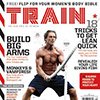Whether it's beach season or off-season growth time, it seems like every guy in every gym obsesses over chest training. While chest training is certainly a critical part of any program, it's not the end-all, be-all most guys make it out to be.
If anything, training your back is even more important than training your pecs, delts, and all the other muscles involved in the ego-boosting bench press.
Read on to learn why you need to balance your back training with your chest training, and get my top tips for super-effective back workouts!
BALANCING YOUR CHEST AND BACK
Pecs may be the go-to "show" muscle, and it's nice that you can see them in the mirror, but in terms of size and strength, they can't hold a candle to your back.
As one of the biggest complexes of muscle on your body, the back of your torso includes your lats, rhomboids, traps, spinal erectors, and rear delts, as well as plenty of smaller muscles that tie everything together. This is where your true power comes from, and a big, powerful back can actually help you move more weight—not just on deadlifts, but on the bench press, squat, and every other movement that requires balance and stability.
In fact, neglecting your back in favor of too much chest training can actually cause injuries in the long run. That's because your shoulders are your most delicate and mobile joints, and an imbalance of pressing and pulling movements will tear them to pieces—especially if you're using shoddy form on your bench and overhead press.
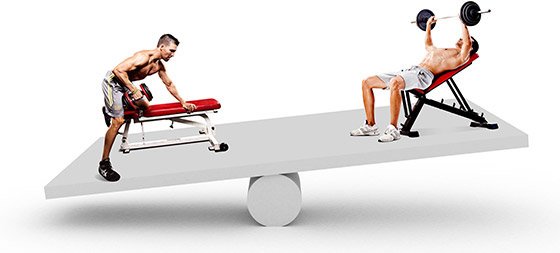
Even if you've got shoulders of steel, keep in mind that an underdeveloped back will just look silly. You may have a decent physique from the front, but at any other angle your lack of upper- and lower-back development will make it clear that you've been spending too much time on the bench.
ROW TO GROW
So, what are the best exercises to build up the back and avoid injury from the front? In my opinion, the row is king. There are plenty of great variations, but in general, horizontal pulling is what you'll need to balance out all of those bench presses, incline presses, and other horizontal pushing movements.
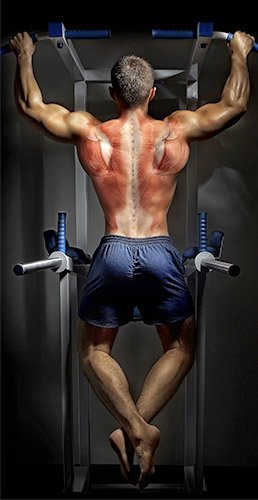
If you're roughly as strong on barbell rows as you are on the bench press, your shoulders are going to be safer and you'll be well on your way to a big and balanced physique.
The barbell row is probably your best bet as far as specific rowing exercises are concerned. Combine it with some heavy dumbbell rows and some occasional cable work, and you should be good to go for a long time.
More advanced guys may need to pick fancier variations to bring up a relatively weak back, but if you're focusing on big gains all over your body, stick to the basics.
THE ALMIGHTY PULL-UP
The row may be my favorite upper-back movement, but pull-ups absolutely have their place. I do mean pull-ups, by the way, not lat pull-downs.
Pull-downs are all well and good if you're doing an ultra-high-volume back workout, but if you're relatively fresh you should focus on actually pulling your own body up to a bar.
Developing the strength to bang out high reps with your body weight—and eventually add lots of weight with a belt—will do almost as much as the row to keep your shoulder girdle healthy and strong.
DEADLIFTS FOR SIZE AND THICKNESS
This wouldn't be a complete back training article if I didn't include the deadlift. I can't tell whether deadlifts really do much to balance out pressing movements the ways rows and pull-ups do, but they build the meat in your lower, mid, and upper back that keep you stable and strong during just about every other movement.
Some lazy trainers point to this or that pro bodybuilder who never deadlifts as an example of how you don't really need to do them, but I don't buy it. Unless you're a genetic freak or have some insane gift for rowing and pull-up strength, you're never going to build your entire back to its full potential without heavy deadlifts.
Stick to the 4-6 rep range, strap up if you need to, and make sure you're adding weight to the bar from one session to the next.
PUTTING IT ALL TOGETHER
How should you organize these movements into a back workout? The answer depends on your current training split. If you're only training your back once per week—and if it's as much a weak point for you as it is for most—you should probably change your schedule up to accommodate at least two back days per week, even if you have to consolidate other days.
On one back day you'll focus on lighter, less lower-back-intensive movements like pull-ups, pull-downs, and chest-supported machine rows. On the other day you'll hit it hard with deadlifts, free weight rows, and some extra pull-ups to finish.
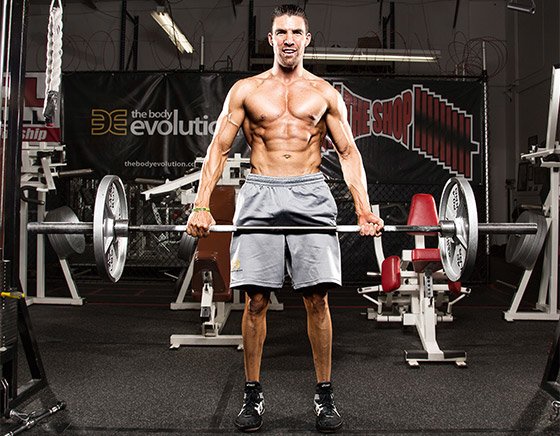
If you're doing an upper-lower split, on the other hand, just incorporate the upper-back movements—pull-ups and rows—into each upper-body workout, usually after your pressing work.
Additionally, do conventional, full-range deadlifts on at least one of your lower-body days. Add in stiff-leg or sumo deadlifts on another leg day if your recovery abilities allow. This stuff isn't complicated or fancy, but it's sure to produce serious results and keep your physique balanced and healthy for the long haul.
Though your back doesn't stare at you in the mirror every day, it is probably the muscle that's the most crucial for making the rest of your muscles look good, while improving your total body performance.
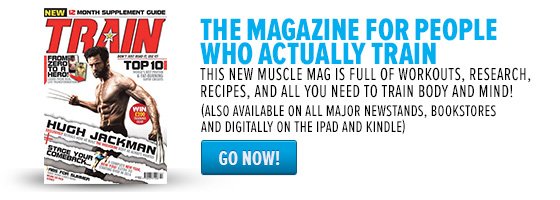
Recommended For You

Upgrade Your Nutrition
Refresh your dietary software. Get full access to the data you need to optimize muscle.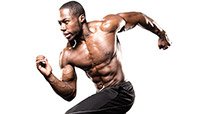
Can You Spot-Target Fat Deposits?
The short answer is no, but the long answer is yes. Here's the new thinking that might challenge everything you thought you knew about spot-reducing fat.
